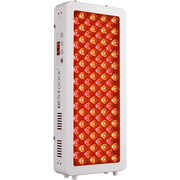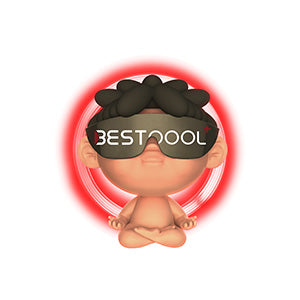In the journey of growth, the two main problems endurance athletes and runners face are the high incidence of injuries and slow progress. Pushing distances stresses the key muscles, such as the hips, quads, hamstrings, and Achilles. It also corresponds to the two aspects of the runners' demands: one is to be healthy and injury-free, and the other is to be able to improve. The root cause of runners' pain and slow progress is the lack of systematic and long-term capacity building. When we talk about running, it is about improving endurance. Many runners pursue running fast and more one-sidedly and ignore the basic capacity building of the body. Their ability deficiencies get exposed under the stimulation of external loads, leading to injuries. You might say that injuries are a must for every runner. But do you know? The dangers of these ailments could go far beyond. Today, we explore the unique benefits of red light therapy for endurance athletes and runners.

What Is Red Light Therapy?
Red light therapy is a phototherapy method that uses artificial or natural visible red and near-infrared light (660–850 nm) to accelerate the body's biological functions and prevent and treat diseases. Red light therapy is best known for muscle recovery, joint health, and wound healing.
Why Is Red Light Therapy Suitable for Runners?
Boost Muscles Relaxation
Good flexibility allows runners to move freely and in coordination at full amplitude. Stability is the counterpart to flexibility, and better movement stability is achieved through strength training. For runners, it is necessary to strengthen the basic functions of the body, which is the harmony of flexibility and stability. Studies have shown red light therapy reduces post-run muscle tension, thereby promoting relaxation. Red light therapy potentially influences the neuromuscular system by decreasing neural activity and inducing muscle relaxation. It directly penetrates the body by promoting blood circulation and stimulating nitric oxide (muscle-relaxing molecules).
Faster Recovery
Do you know? Every athlete and runner, whether they are the focus of the spotlight on TV or not, goes through quite rigorous training almost every day. Their body is prone to unexpected wear and tear. Spasticity is one of the leading culprits in the occurrence of running disorders. Red light therapy relieves muscle spasms. Because red light acts on superficial tissues, it can reduce muscle tone and relieve spasms. It can also reduce swelling and increase metabolism, which can achieve the effect of treating acute running injuries rapidly.
Repairs Minor Damage
When runners' muscles and soft tissues have sprains or joint dysfunction, red light therapy can accelerate blood circulation, enhance local resistance, reduce swelling, and relieve pain. It promotes the proliferation of skin cells and collagen synthesis, aiding in the repair and strengthening of damaged tissue. Red light therapy has been shown to accelerate the healing of wounds, cuts, and abrasions. A 2012 trial concluded that runners treated with red light therapy experienced a reduction in "exercise-induced oxidative stress and muscle damage."
Delay Onset of Muscle Soreness
Delayed-onset muscle soreness refers to muscle pain or discomfort that occurs when the body is not well accustomed to strenuous exercise. Because this pain occurs 24 to 48 hours after exercise, it is called delayed-onset muscle soreness. Delayed-onset muscle soreness often occurs during athletic training and physical exercise and is experienced by almost everyone who has trained or even those who are not accustomed to physical activity. Red light therapy not only improves physical performance but also prevents muscle soreness and fatigue after running.

At-Home vs. Professional Treatments
Nowadays, fitness centers, sports centers, and gyms frequently incorporate red light therapy equipment to boost athletes' performance. At-home usage of various types of red light therapy devices is also popular among fitness enthusiasts. The small and portable red light therapy tool could help athletes, especially in post-run recovery. It allows athletes to optimize training volume safely, pursuing personal bests marathon after marathon.
Red Light Therapy Safety
First of all, it is non-invasive, painless, and has few side effects. Compared with surgical treatment, red light therapy can quickly reduce our pain as long as it meets the indications and rarely causes allergic reactions. Red light therapy devices are FDA class II approved, and their usage cannot directly cause any harm to the human body. Remember, red light therapy devices are not a substitute for professional medical treatment to cure diseases. Rather, it can support and enhance overall health. Red Light Therapy is a chemical-free and safe phototherapy-based method.
Conclusion
It is easy to have a variety of injuries during running, which can be treated and recovered through red light therapy. However, it also reminds all runners that when there are various injuries and pains, they must not be careless. Finally, and most importantly, proper exercise is also very important. The combination of red light therapy and active exercise rehabilitation can promote the recovery of injuries to the greatest extent! Red light warrants consideration for runners seeking to maintain their health and continue doing what they love.
References & Citations
[1] Glass G. E. (2021). Photobiomodulation: The Clinical Applications of Low-Level Light Therapy. Aesthetic surgery journal, 41(6), 723–738. https://doi.org/10.1093/asj/sjab025
[2] Wunsch, A., & Matuschka, K. (2014). A controlled trial to determine the efficacy of red and near-infrared light treatment in patient satisfaction, reduction of fine lines, wrinkles, skin roughness, and intradermal collagen density increase. Photomedicine and laser surgery, 32(2), 93–100. https://doi.org/10.1089/pho.2013.3616
[3] Peserico, C. S., Zagatto, A. M., & Machado, F. A. (2019). Effects of Endurance Running Training Associated With Photobiomodulation on 5-Km Performance and Muscle Soreness: A Randomized Placebo-Controlled Trial. Frontiers in physiology, 10, 211. https://doi.org/10.3389/fphys.2019.00211
[4] Hsieh, C. C., Nosaka, K., Chou, T. Y., Hsu, S. T., & Chen, T. C. (2022). Effects of Far-Infrared Radiation-Lamp Therapy on Recovery From Simulated Soccer Match Running Activities in Elite Soccer Players. International journal of sports physiology and performance, 17(9), 1432–1438. https://doi.org/10.1123/ijspp.2022-0084
[5] Tomazoni, S. S., Machado, C. D. S. M., De Marchi, T., Casalechi, H. L., Bjordal, J. M., de Carvalho, P. T. C., & Leal-Junior, E. C. P. (2019). Infrared Low-Level Laser Therapy (Photobiomodulation Therapy) before Intense Progressive Running Test of High-Level Soccer Players: Effects on Functional, Muscle Damage, Inflammatory, and Oxidative Stress Markers-A Randomized Controlled Trial. Oxidative medicine and cellular longevity, 2019, 6239058. https://doi.org/10.1155/2019/6239058
Read More
- Red Light Therapy - The Optimum Guide – BESTQOOL
- The Power of Light: Red Light Therapy for Mood Upliftment – BESTQOOL
- Red Light Therapy for Weight Loss and Cellulite Reduction – BESTQOOL
- What is the Mechanism Behind Red Light Therapy? – BESTQOOL
- Red Light Therapy: A Powerful Tool for Rehabilitation and Recovery – BESTQOOL














 Small
Small

 Moderate
Moderate

 Moderate
Moderate

 Moderate
Moderate

 Full
Full



